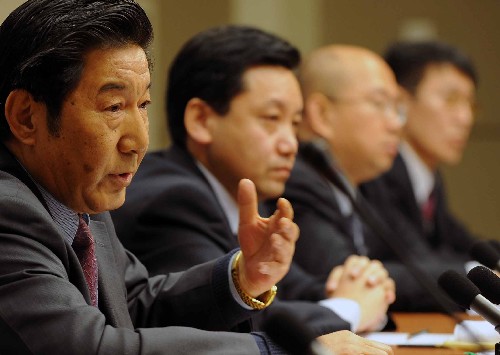A leading expert on Tibet studies yesterday denounced what he termed media hype on population movements to Tibet, saying that Tibetans remain the great majority in the autonomous region.
Figures from the last two national census surveys, conducted in 1990 and 2000, showed that Tibetans accounted for 95 percent and 92 percent of the region's population, said Tanzen Lhundrup, deputy director of the Institute of Social and Economic Studies affiliated to the China Tibetology Research Center (CTRC).

Only 3 percent and 6 percent of the population in Tibet were Han people in the two surveys, he told a press conference organized by the State Council Information Office.
Tanzen Lhundrup said the issue of transient population in Tibet has been hyped up by foreign media for many years.
"Actually, since China's reform and opening-up, the entire country has seen large-scale population movements and Tibet has been no exception," he said.

"Economic development in Tibet has attracted some non-native people to engage in commerce and construction businesses in the region. Their activities have greatly enriched and facilitated the region's market economy."
Other Tibetologists yesterday also condemned the recent violence in Lhasa, saying it is a political, not an ethnic, issue.
"We strongly condemn those who premeditated, organized, incited and participated in the riots," CTRC general director Lhagpa Phuntshogs told the press conference.
He said researchers on Tibet issues "felt furious and distressed" about the riots, and they support measures taken by governments at all levels to maintain social order.
Dramdul, director of the CTRC's Religion Studies Institute, said Tibetans and people of the Hui and Han ethnicity were all victims in the recent riots.
He said China advocates concord, solidarity and common progress between its different ethnic groups.
Lhagpa Phuntshogs said only a small number of the 46,000 monks in Tibet participated in violence and looting during the riots. Most temples were stable, and some monks denounced the violence, he said.
"I am from Tibet, and as far as I know, many religious people in Tibet share the view that the monks who resorted to violence had broken religious precepts and should be punished," he said.
Tanzen Lhundrup said the country's economic development benefits everyone of every ethnic group in Tibet.
(China Daily, Xinhua News Agency March 27, 2008)